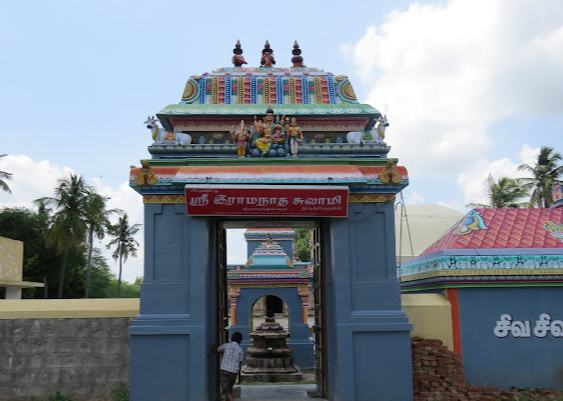To rescue Mother Sita from Ravana’s captivity, Lord Sri Rama had to defeat Ravana and his army. To absolve himself of the doshas incurred during this conflict, He worshipped Lord Shiva at Rameswaram before returning to Ayodhya. On His journey, He discovered a Shiva Linga beneath a Shenbaga tree and prepared to perform a puja. However, Nandhi, the bull vehicle of Shiva, mistook Rama for an ordinary human and prevented Him from approaching the Linga. Ambica intervened, pulling Nandhi aside to allow Rama to perform the puja. Pleased with the devotion shown, Rama returned to Ayodhya after completing the worship, and Lord Shiva is revered here as Rama Natheswarar.
Administration History :
The temple is under the administrative control of Velakurichi Adheenam, which has historically overseen its management and operations. Significant contributions for the temple's maintenance and renovation were made by various rulers, including Kulothunga Chozha and the Vijayanagara kings, who provided land and resources. Kumbhabhishekam ceremonies have been conducted periodically, with the latest one held on November 11, 2012, to ensure the temple's continued religious significance and upkeep.
